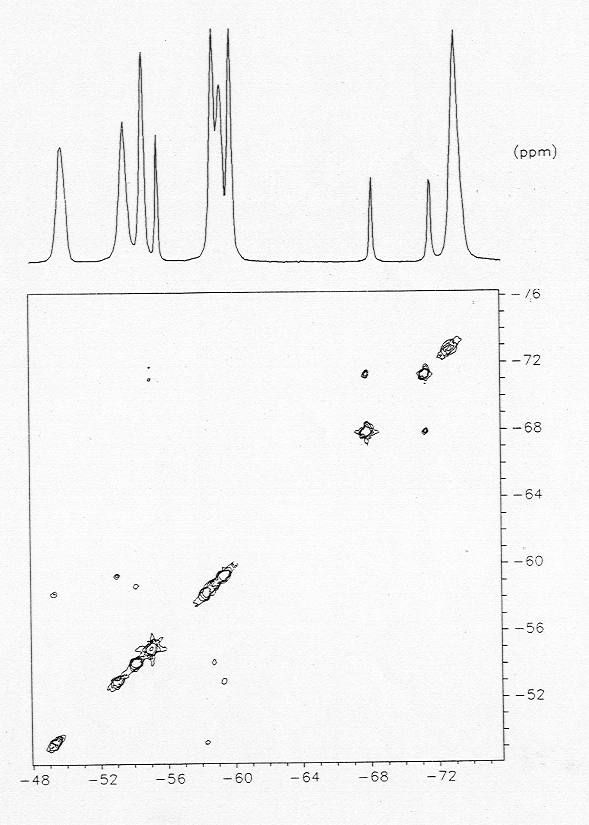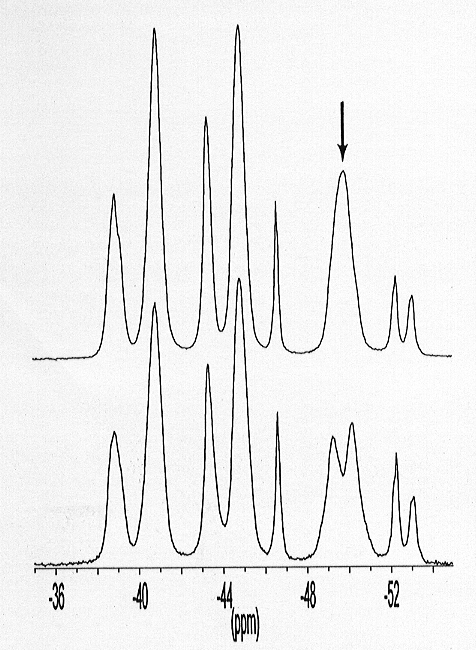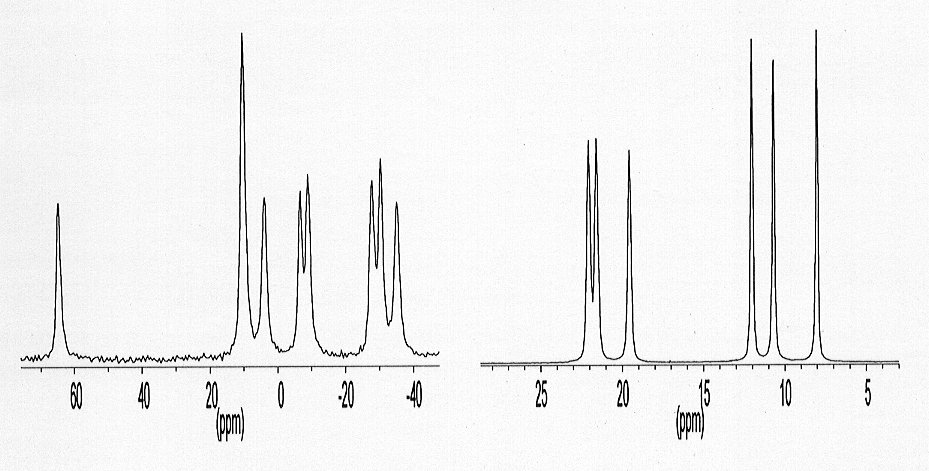

One- and two-dimensional 31P MAS NMR experiments on inorganic phosphates are important to obtain short-to-mid-range distance information, including network connectivities. While it is straightforward to obtain simple one-dimensional 31P MAS spectra of such systems, in-depth understanding of these spectra and extraction of wanted parameters present a considerable challenge in terms of NMR spectroscopy: the 31P spin systems in inorganic phosphates can be treated neither as collections of isolated spins nor as isolated spin pairs, and the 31P spins are not sufficiently tightly (dipolar) coupled to qualify as an abundant spin bath. This intermediate regime of fairly strongly interacting, fairly abundant 31P nuclei can only be tackled by employing a wide range of different one- and two-dimensional 31P MAS NMR techniques. In addition, one-dimensional 31P MAS spectra of such compounds may be of deceptive simplicity.
As a starting point we have chosen the compounds SiP2O7 and TiP2O7 which, to some extent, are isostructural. A second set of compounds includes cadmium phosphates such as Cd3(PO4)2. For the latter and for SiP2O7, 31P MAS investigations are also necessary as a preparation step towards future 31P-29Si, 113Cd double resonance experiments, ultimately with the aim of using such techniques for the investigation of amorphous phosphate systems.
The (known) complicated superstructure of SiP2O7 with a multitude of similar P-sites is equally reflected in a multitude of 31P resonances (see Fig. 3.3-9). Two-dimensional 31P MAS experiments which are either sensitive to geometric distances (EXSY-type experiments) or tailored to reveal connectivities via homonuclear J-coupling (COSY-type experiments), together can be used to construct maps of connectivities from 31P NMR. A 31P MAS COSY experiment on SiP2O7 is also shown in Fig. 3.3-9. Some unsolved problems with the single-crystal X-ray structure of SiP2O7 have so far remained, orbiting around the question of whether some linear O3P-O-PO3 units do exist in these structures or not. 31P MAS spectra of TiP2O7 as a function of the external magnetic field strength Bo and of the MAS frequency, show characteristic changes which can be taken as evidence for the presence of (some) linear P-O-P links. This is shown for two selected 31P MAS spectra of TiP2O7 in Fig. 3.3-10. In summary, 31P MAS NMR methods should enable us to complete our understanding of the crystal structures of SiP2O7 and TiP2O7, while X-ray diffraction results are necessary to better understand the 31P NMR parameters of inorganic phosphates once these parameters have been extracted from a multitude of NMR experiments.
Cd3(PO4)2 has an important role to
play in this learning process. Also this compound displays a fairly complicated
crystal structure, but all crystallographically distinct sites are resolved
in the 31P and 113Cd MAS spectra, respectively. This
is illustrated in Fig. 3.3-11. Based on the information from the single-crystal
X-ray structure, it is known that different sites display a range of Cd
... P distances which makes this compound ideal to explore the application
of 31P-113Cd CP/MAS experiments. Also, given the
resolution of all crystallographic sites in the 31P and 113Cd
MAS spectra, two-dimensional NMR methods can now be used to obtain heteronuclear
Cd-P correlations, as well as to obtain 31P and 113Cd
shielding tensor components for the different crystallographic sites. First
preliminary 31P-113Cd double resonance experiments
have been carried out as described in 3.3-10.
 |
Fig. 3.3-9: 31P MAS NMR of SiP2O7; top: one-dimensional 31P MAS; |
 |
Fig. 3.3-10: 31P MAS spectra of TiP2O7 at different MAS frequencies |
 |
Fig. 3.3-11: MAS NMR spectra of Cd3(PO4)2; left: 113Cd MAS, right: 31P MAS. Note the spectroscopic resolution of the 9 Cd and 6 P crystallographic sites, which renders this compound an ideal test-case for the application of 31P-113Cd double resonance NMR techniques. |

Tel: +49-(0) 921 55 3700 / 3766, Fax: +49-(0) 921 55 3769, E-mail: bayerisches.geoinstitut(at)uni-bayreuth.de
 Previous page
Previous page
 marked resonance displays typical MAS frequency dependent splitting for
an (isolated) pair of chemically equivalent 31P spins, such
as in a linear P2O7-unit.
marked resonance displays typical MAS frequency dependent splitting for
an (isolated) pair of chemically equivalent 31P spins, such
as in a linear P2O7-unit.